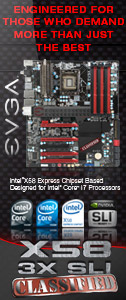«Previous Page 1 2 3 4 -View All- Next Page»
Testing.
To see how the IC Perihelion performs it will be compared to a few of its competitors and its stable mate IC Diamond.
The system it will be tested on is as follows: -
| Motherboard: - | Gigabyte GA-H55N-USB3 H55. |
| CPU: - | Core i3 530 @ 4Ghz and 1.25v on the core. |
| CPU Cooler: - | Arctic Cooling Freezer Pro7 V2. |
| Memory: - | Patriot Sector 5 1600Mhz. |
| HDD: - | WD Scorpio Black 250GB 2.5”. |
| PSU: - | 400W SILVERPOWER SP-400P2C PSU. |
| Optical: - | Samsung SH-S223C. |
| Case: - | Cooler Master Elite 340. |
Not the most powerful system in the world, but even lower power systems deserve the best cooling possible.
To test the performance of the various compounds the above system will be run at full load using Prime95 with the temperatures being monitored using Coretemp, each test will be run for 30 minutes to an hour to allow temperatures to peak. Temperatures will be shown as an average of the two cores and given as the amount above ambient, ambient temperature at the time of testing was 20c.
The CPU fan was set to run at max speed during all tests.
Please note some thermal pastes actually require from a few to numerous heat up / cool down cycles before they achieve optimum performance, this maybe reflected in some of the results.
The other compounds that will be tested and compared to the Perihelion compound are as follows: -
The stock compound pre-applied to the AC Freezer Pro7 V2, which is Arctic Cooling MX2 from my research.
- Arctic Silver 5.
- Ceramique by Arctic Silver.
- Tuniq TX-2.
- Finally IC Diamond.
Results.
First to be tested was the “stock MX2” Arctic Cooling Freezer 7 Pro Rev2 paste. It did reasonably well peaking at 43.5 degrees Celsius above ambient.
Next to be tested were the Arctic Silver pastes, the staple paste of choice for many enthusiasts in the past with Arctic Silver 5 the paste to beat for many years.
First up the Arctic Silver Ceramique. To be honest the results were a little suprising. Either that or the pre-applied paste to the Arctic Cooling Freezer 7 Pro Rev2 is a lot better than expected. Arctic Silver themselves say AS Ceramique could take 20+ hours and several heat cycles to reach optimum performance, improving by a few degrees once “bedded in”.
Arctic Silver 5. At first glance it may seem that AS5 hasn’t done that well, but as mentioned earlier it may well have improve given a few heat up / cool down cycles. Again Arctic Silver themselves say AS5 could take up to 200 hours and several heat cycles to reach optimum performance, possibly improving by up to 5c once “bedded in”.
Next up the Tuniq TX-2. A very slight improvement over the “stock” paste. There is no mention on Tuniqs website as to whether or not it needs to be bedded in, so presumably it doesn’t?
On to the Innovation Cooling products, first their top of the range compound IC Diamond.
No real surprises here, as expected the IC Diamond offers the best results so far.
Finally, the product on review, IC Perihelion. A lot thicker consistency than I expected as it almost resembles putty.
All in all a very good result, bettering some good competition.
Results in chart form demonstrate a clearer comparison.
Please note all results are shown as above ambient.
A slight increase in idle temp for the perihelion, this may or may not be some latent heat from the previous test?
 An excellent result for the IC Perihelion, only beaten by its stablemate, which is considerably more expensive, by an average of 1c in my tests.
An excellent result for the IC Perihelion, only beaten by its stablemate, which is considerably more expensive, by an average of 1c in my tests.
Chart to show the difference in idle to load temperatures, again this may have been affected by the slightly high “idle” temp of the Perihelion. It does however show the IC compounds are clearly better than most of the other pastes used.














